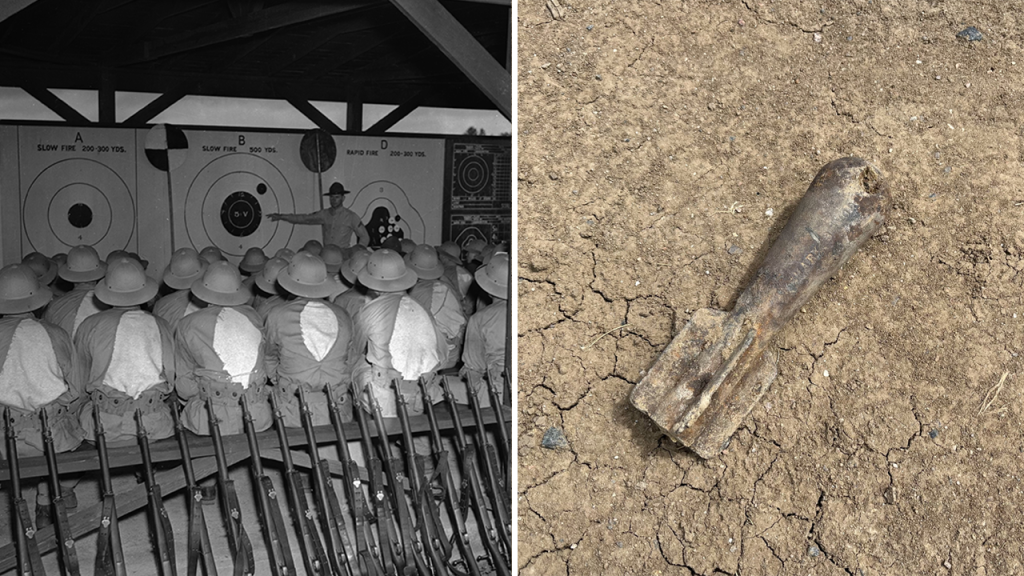Officials in Arapahoe County, Colorado, were called to investigate a piece of history found by construction workers on a site where a metal device was discovered. The Aurora Police requested the Arapahoe Sheriff’s Department Bomb Squad to determine the nature of the device. The Sheriff’s office shared the discovery of what appeared to be a military ordnance, found in the former Lowry Bombing and Gunnery Range area. This 100-square-mile site was used for military armament and bombing training during World War II, according to the Colorado Department of Public Health & Environment. The former range operated from 1942 to 1963 and included training with live and inert munitions.
Upon arrival at the scene, bomb technicians utilized an X-ray device to analyze the object and identified it as an inert cast-iron miniature bomb. Specifically, it was determined to be a World War II Mark 23 Mod 1 training round. This type of miniature bomb was often used for practice purposes on land targets during military training exercises. The former Lowry Bombing and Gunnery Range also contains four former Titan I missile complexes that were operational from 1962 to 1965. The device was handed over to the Buckley Space Force Base for further examination and handling.
The Colorado Department of Public Health & Environment provides important munition safety tips, emphasizing that training and practice munitions can still pose risks. It is crucial not to assume that items labeled as ‘training’ or ‘practice’ are necessarily safe to handle, as military munitions are inherently designed to cause destruction and harm. Regardless of their age, munition items retain their hazardous and dangerous nature, which underscores the importance of leaving their handling to trained experts who can safely assess and manage them. The CDPHE encourages caution and adherence to safety guidelines when encountering munitions.
The former Lowry Bombing and Gunnery Range served as a significant training ground during World War II, where military personnel honed their skills with various munitions, including practice and high-explosive bombs. The site’s historical legacy is intertwined with the development of military tactics and technologies during a pivotal period in history. The discovery of the World War II training round in modern times serves as a reminder of the lasting impact of past conflicts on present-day environments and the critical importance of proper disposal and management of munitions remnants.
The involvement of multiple agencies, including the Aurora Police, Arapahoe Sheriff’s Department Bomb Squad, and Buckley Space Force Base, highlights the coordinated efforts required to safely address and handle potentially hazardous military ordnance. The identification and secure transfer of the inert cast-iron miniature bomb demonstrate the expertise and professionalism of bomb technicians in evaluating and managing such materials. The adherence to safety protocols and the responsible handing over of the device to a designated military facility contribute to maintaining public safety and preventing any potential risks associated with the discovery.
Overall, the incident involving the discovery of the World War II training round in Arapahoe County underscores the ongoing challenges and responsibilities associated with historical munitions remnants. By following established safety guidelines, engaging appropriate authorities, and raising awareness about the potential dangers of handling such items, communities can mitigate risks and ensure the safe management of military ordnance. The collaboration between law enforcement, military, and public health agencies in response to such discoveries reflects a commitment to protecting public safety and preserving historical artifacts in a responsible and informed manner.


